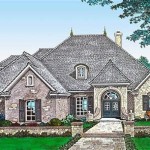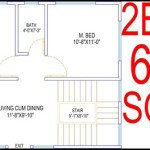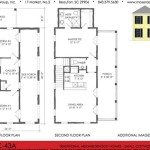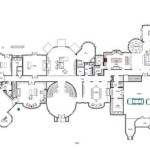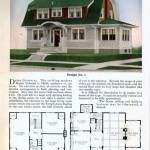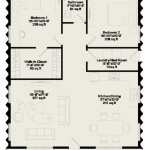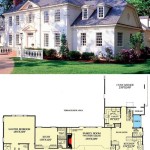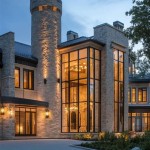3 Bedroom House Plans: Design Your Dream Homestay in Ukraine
The concept of a "homestay" in Ukraine has evolved beyond simply offering a spare room. It encompasses a spectrum of accommodation options ranging from private rooms to entire houses, catering to tourists seeking authentic experiences and longer stays. Designing a 3-bedroom house as a potential homestay requires careful consideration of functionality, guest comfort, local building regulations, and the overall aesthetic appeal. This article explores key aspects of 3-bedroom house plans suitable for a homestay in Ukraine, focusing on maximizing guest satisfaction and investment potential.
Ukraine's diverse landscapes and rich cultural heritage make it an increasingly popular tourist destination. From the bustling city of Kyiv to the Carpathian Mountains and the Black Sea coast, the country offers a wide range of attractions. This influx of tourists has created a demand for diverse accommodation options, including homestays that offer a more personalized and immersive experience than traditional hotels. A well-designed 3-bedroom house can effectively cater to families, groups of friends, or even individual travelers seeking a comfortable and convenient base from which to explore the region.
The selection of an appropriate house plan is paramount. It should not only meet the immediate practical needs of a comfortable dwelling but also consider the potential for future expansion or adaptation. Consideration should be given to the specific location within Ukraine, as regional architectural styles and building materials vary considerably. For example, a house in the Carpathian region might incorporate more wood and natural stone, while a house near the Black Sea might feature lighter colors and materials suitable for a coastal climate.
Key Point 1: Floor Plan Optimization for Guest Comfort and Privacy
A successful homestay design prioritizes both guest comfort and privacy. The floor plan should be carefully considered to ensure that guests have their own dedicated spaces while also facilitating interaction with the host family (if applicable). Key elements to consider include:
Bedroom Placement: Ideally, the bedrooms should be spaced apart to minimize noise transfer and provide a sense of privacy for each guest. Placing the master bedroom at one end of the house and the guest bedrooms at the other end can create a more distinct separation. If the homestay aims to cater to families, adjacent bedrooms can be designed with a connecting door to allow for parental supervision of children.
En-suite Bathrooms: Providing each bedroom with an en-suite bathroom is highly desirable for guests. This eliminates the need for shared facilities and greatly enhances the overall comfort and convenience. Even if space is limited, designing small but functional bathrooms with essential amenities is still preferable to shared bathrooms.
Common Areas: A spacious and well-equipped living room and dining area are essential for creating a welcoming and comfortable environment for guests. The living room should be furnished with comfortable seating, a television, and perhaps a fireplace, depending on the location and climate. The dining area should be large enough to accommodate all guests comfortably and should be located close to the kitchen for easy serving and cleanup.
Kitchen Considerations: The kitchen's design depends on the extent of guest access. If guests are expected to prepare their own meals, the kitchen should be fully equipped with modern appliances, ample counter space, and sufficient storage. If the host family will be providing meals, the kitchen can be designed primarily for their use, while still providing guests with access to basic amenities such as a refrigerator and microwave.
Entrance and Foyer: A well-defined entrance and foyer area creates a positive first impression and provides a space for guests to remove their shoes and coats before entering the main living areas. This is particularly important in Ukraine, where it is customary to remove outdoor footwear when entering a home.
Soundproofing: Incorporating soundproofing measures is crucial for ensuring guest privacy and a peaceful stay. This can include using insulation in the walls and ceilings, installing double-glazed windows, and choosing flooring materials that minimize noise transfer. Special attention should be paid to soundproofing between bedrooms and between bedrooms and common areas.
Accessibility Considerations: Depending on the target audience, it may be beneficial to incorporate accessibility features into the design. This could include wider doorways, grab bars in bathrooms, and ramps instead of stairs. While not always essential, accessibility features can significantly broaden the appeal of the homestay.
Key Point 2: Incorporating Ukrainian Design Elements and Local Materials
Authenticity is a key draw for many tourists choosing a homestay. Incorporating Ukrainian design elements and local materials into the house's construction and decor can enhance its appeal and create a more memorable experience for guests. This does not necessarily mean replicating traditional Ukrainian architecture exactly but rather incorporating subtle nods to the country's cultural heritage.
Architectural Style: Researching regional architectural styles is crucial. A house in the Carpathian Mountains could feature a wooden frame, steeply pitched roof, and decorative carvings, while a house in central Ukraine might draw inspiration from traditional thatched-roof cottages but with modern interpretations. Utilizing local builders and craftsmen can ensure that the house is built in accordance with local traditions and regulations.
Building Materials: Sourcing building materials locally not only supports the local economy but also ensures that the house blends in with its surroundings. Common building materials in Ukraine include wood, brick, stone, and clay. Utilizing these materials in a creative and modern way can create a unique and visually appealing design.
Interior Design: The interior design should reflect Ukrainian culture and traditions without being overly kitschy. This can be achieved through the use of traditional patterns, colors, and motifs in textiles, furniture, and artwork. Consider incorporating Ukrainian embroidery, pottery, and traditional crafts into the decor. Local antique markets and craft fairs are excellent sources for unique and authentic decorative items.
Color Palette: Traditional Ukrainian color palettes often feature earthy tones such as browns, greens, and yellows, as well as vibrant colors such as red, blue, and orange. These colors can be incorporated into the design through paint, wallpaper, and textiles. Using natural light to enhance the colors and create a warm and inviting atmosphere is also important.
Landscaping: The landscaping should complement the house's design and reflect the local flora. Planting native trees and shrubs can create a beautiful and sustainable landscape that blends in with the surrounding environment. Incorporating a traditional Ukrainian garden with flowers and herbs can also add to the authenticity of the homestay. Consider adding a traditional Ukrainian "pich" (outdoor oven) for cooking and entertaining.
Furnishings: Choosing locally made furniture is a great way to support local artisans and create a unique and authentic look. Look for furniture made from natural materials such as wood and wicker. Incorporating vintage or antique furniture can also add character and charm to the homestay. Avoid mass-produced furniture that lacks personality and character.
Key Point 3: Compliance with Ukrainian Building Codes and Homestay Regulations
Before embarking on any construction or renovation project, it is essential to familiarize oneself with Ukrainian building codes and regulations, as well as any specific regulations pertaining to homestays. Failure to comply with these regulations can result in fines, delays, and even the closure of the homestay.
Building Permits: Obtaining the necessary building permits from the local authorities is crucial before starting any construction or renovation work. The specific permits required will depend on the scope of the project and the location of the property. Consult with a local architect or engineer to ensure that all necessary permits are obtained.
Safety Regulations: Ukrainian building codes include strict safety regulations regarding fire safety, electrical wiring, and plumbing. Ensure that the house is built in accordance with these regulations to protect the safety of guests and the property. Installing smoke detectors, fire extinguishers, and carbon monoxide detectors is essential.
Homestay Licensing: Some regions in Ukraine may require homestays to be licensed. Check with the local authorities to determine whether a license is required and what the requirements for obtaining a license are. This may involve inspections of the property to ensure that it meets certain safety and hygiene standards.
Taxation: Homestay income is subject to taxation in Ukraine. Familiarize yourself with the relevant tax laws and regulations and ensure that all taxes are paid on time. Consult with a local accountant to ensure compliance with all tax obligations.
Insurance: Obtaining adequate insurance coverage for the homestay is essential to protect against potential risks such as fire, theft, and liability. Choose an insurance policy that covers both the property and the guests.
Data Privacy: When collecting and processing personal data from guests, it is important to comply with Ukrainian data privacy laws. Obtain consent from guests before collecting their personal data and ensure that the data is stored securely and used only for legitimate purposes.
By carefully considering these key points, prospective homestay owners in Ukraine can design and build a 3-bedroom house that not only meets the needs of guests but also complies with all relevant regulations and embodies the unique charm and hospitality of the country.

Pre Built Ukraine Steel Building Residential Wooden Modular Container Home Small House Prefab Made In China Com

Two Bedroom Luxury 50 Sqm Prefab House In Ukraine Made China Com

Create Professional 2d And 3d Floor Plans Roomsketcher

Pre Built Ukraine Steel Building Residential Wooden Modular Container Home Small House Prefab Made In China Com

Create Professional 2d And 3d Floor Plans Roomsketcher
Green Villa B New 3 Bedroom With Pool Ubud Bali Indonesia

Prayoga Homestay Ungasan Updated S 2025

Create Professional 2d And 3d Floor Plans Roomsketcher

New Container House Luxury Building Prefabricated Hotel Web Celebrity Culture Tour Made In China Com
Tejdeep A Boutique 3bhk Homestay Jaipur India Season Deals From 113
Related Posts

